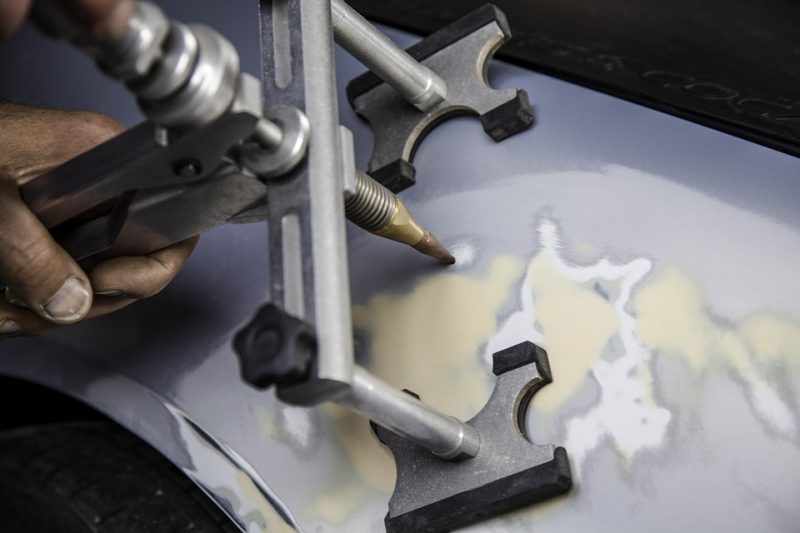Contents
– Bodywork tools for routine operations
– Bodywork tools for straightening operations
No matter how careful you are, you run the risk of getting a dent in your car. Even the most cautious drivers can be involved in an accident, whether a stray shopping cart or backing into a fence. Regardless of how the dent occurred, you must be considering how to remove it without depleting your savings! All for the sake of a minor ding! Even the tiniest ding can become a financial burden if you have to take it to an auto body shop to have the paint removed or body filler applied.
To repair your vehicle, different types of bodywork tools exist:
– car paint can or body pencil,
– body filler,
– suction cup, etc.
Bodywork Tools for Routine Operations
Hand tools are frequently used for routine operations:
Screwdriver
For the assembly and disassembly of parts,
Wrenches
– Designed for a particular job.
– Can be open or socketed.
Pliers
– Used to grip parts and cut materials.
– Can also be used to straighten hard-to-reach edges.
– Pliers include:
◦ the ordinary pliers,
◦ the gutter pliers,
◦ the beak pliers.
Scissors
– Are specially designed for:
◦ cutting metal,
◦ splitting nuts,
◦ removing welding spots.
– Among the scissors, we distinguish:
◦ the diamond-point chisel,
◦ the round-nosed chisel,
◦ the cold chisel,
◦ the chisel,
◦ the panel-cutting chisel.
Punch to perform accurate work
– Starter punch: used to initiate the dislodging of a pin,
– Centering punch: used to mark the center of a hole,
– Pin punch: to remove pins,
– Tapered punch: used to align parts to be assembled,
– Scribing punch: also called ice punch; it is used to mark and drill holes in sheet metal.
Shears
There are two types of shears:
– hand shears for cutting sheet metal: straight or curved,
– articulated shears for cutting resistant metals: right, left, linear.
Bodywork Tools for Straightening Operations

Some tools are specially designed for straightening the bodywork. Let’s see further below.
Bodywork hammer
Depending on the surface of the sheet metal to be treated, it has the particularity of being circular and flat at both ends.
Sheet metal hammer
– Heavy, to be glided: its weight varies from 400 to 1 200 g.
– It is generally used to roughen badly damaged parts.
– It is mainly used to straighten thick interior panels, such as:
◦ floor,
◦ cross member,
◦ bumper.
Lightweight sheet metal hammer
– Weight between 200 and 350 g.
– It is used for minor body straightening and finishing.
Pick hammer
It can be heavy or light and is used for finishing dents and dings.
Postillon hammer
It has two different ends,
– one with a round head: for ordinary work,
– the other with a square head: for corners.
Cross-pein hammers
They are specially designed to reshape edges and protruding angles.
Heap called anvil
– A heavy, solid bodywork tool with a finely polished surface.
– This block of steel is used to hammer the body part into its original shape.
Pallet or hand anvil
It consists of a support for hammering out the edges and recesses of the bodywork.
Levers
Of various lengths, they are used for damaged parts of the bodywork that are difficult to access with a pile.
The tools suggested in this post are pretty simple and can remedy small depressions in the doors, hood, and bumper. If they don’t seem to be working, consider going to a professional panel beater.


1 comment
[…] The Ultimate Auto Body Shop Tools for Common Repairs; […]